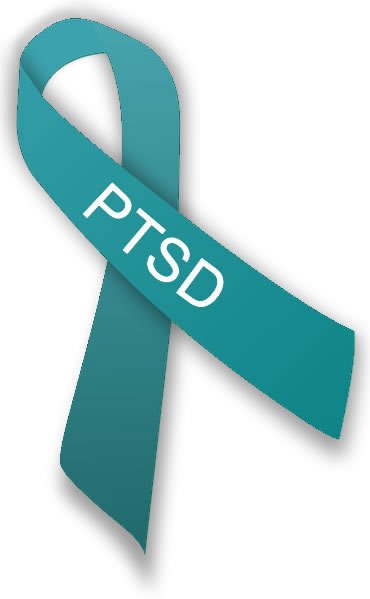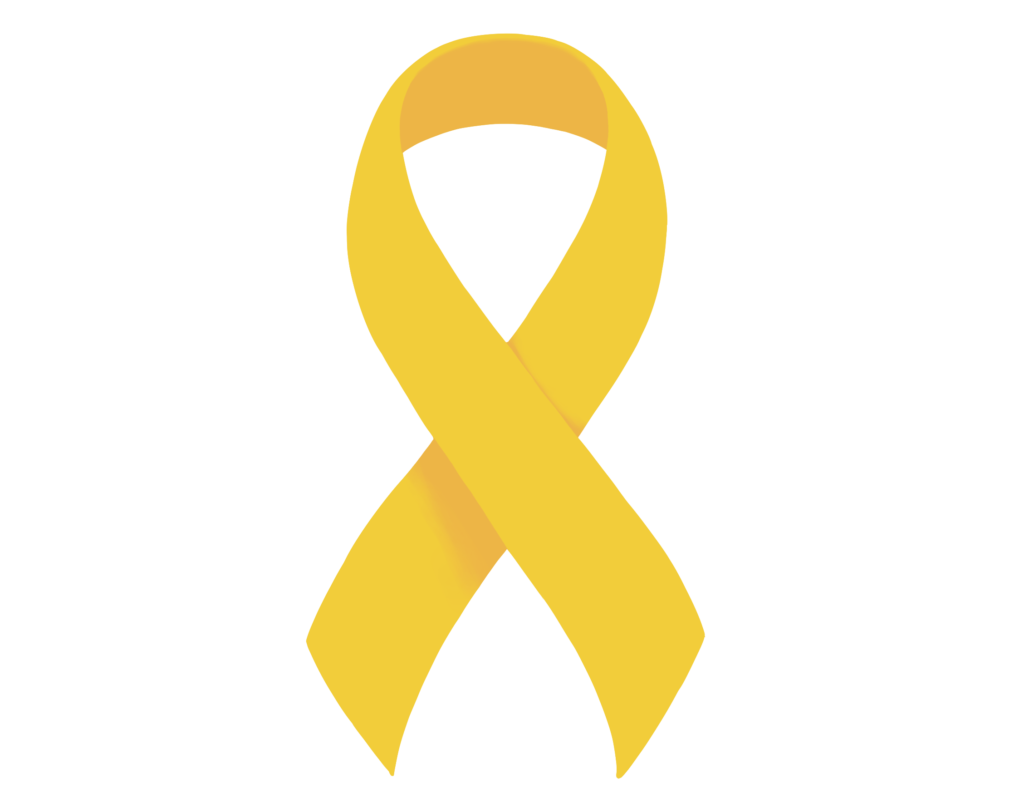Table of Contents
1. Green: The Universal Symbol of Mental Health Awareness

- Primary Meaning: Green is the most widely recognized color for mental health awareness. It symbolizes renewal, hope, growth, and vitality, reflecting the journey toward mental well-being and recovery.
- Campaigns and Events:
- Mental Health Awareness Month (May): Green is prominently featured during this month, with individuals and organizations wearing green ribbons, lighting buildings green, and hosting events to raise awareness.
- World Mental Health Day (October 10): Green is also used to mark this global observance.
- Why Green?: The choice of green is rooted in its calming and soothing qualities, which align with the goals of mental health advocacy—promoting peace, understanding, and healing.
2. Teal: Anxiety and PTSD Awareness

- Primary Meaning: Teal is often associated with anxiety disorders, post-traumatic stress disorder (PTSD), and obsessive-compulsive disorder (OCD). It represents calmness, clarity, and emotional balance.
- Campaigns and Events:
- Anxiety and Depression Awareness Week: Teal is used to highlight the struggles of those living with anxiety and related conditions.
- PTSD Awareness Month (June): Teal ribbons and symbols are used to support individuals affected by trauma.
- Why Teal?: The color teal is chosen for its soothing and tranquil qualities, which resonate with the need for emotional stability and support.
3. Purple: Suicide Prevention and Awareness

- Primary Meaning: Purple is a symbol of suicide prevention, as well as awareness for conditions like borderline personality disorder (BPD) and Alzheimer’s disease. It represents dignity, courage, and hope.
- Campaigns and Events:
- Suicide Prevention Awareness Month (September): Purple ribbons and lighting are used to honor those lost to suicide and to promote prevention efforts.
- World Suicide Prevention Day (September 10): Purple is a key color for this global observance.
- Why Purple?: Purple is often associated with spirituality and transformation, symbolizing the journey from darkness to light and the importance of hope in overcoming despair.
4. Blue: Depression and Anti-Bullying Awareness

- Primary Meaning: Blue is linked to depression awareness and anti-bullying campaigns. It represents calm, stability, and support.
- Campaigns and Events:
- National Depression Screening Day (October): Blue is used to encourage individuals to seek help for depression.
- Anti-Bullying Campaigns: Blue shirts and ribbons are worn during events like World Bullying Prevention Month (October) to promote kindness and inclusion.
- Why Blue?: Blue’s calming and serene qualities make it a fitting symbol for addressing the emotional pain associated with depression and bullying.
5. Yellow: Suicide Prevention and Mental Health Advocacy

- Primary Meaning: Yellow is sometimes used to represent suicide prevention and mental health advocacy, particularly in countries like Australia. It symbolizes hope, positivity, and light.
- Campaigns and Events:
- RUOK? Day (Australia): Yellow is the primary color for this campaign, which encourages people to check in on others and ask, “Are you OK?”
- Why Yellow?: Yellow’s bright and uplifting nature reflects the importance of hope and connection in mental health advocacy.
6. Silver: Brain Disorders and Mental Illness

- Primary Meaning: Silver is associated with awareness for brain disorders, such as schizophrenia, bipolar disorder, and other mental illnesses. It represents clarity, resilience, and strength.
- Campaigns and Events:
- Mental Illness Awareness Week (October): Silver ribbons are used to promote understanding and reduce stigma around brain disorders.
- Why Silver?: Silver symbolizes the complexity and strength of the human mind, as well as the need for clarity in understanding mental health conditions.
7. Multicolor Ribbons: General Mental Health Awareness
- Primary Meaning: Some campaigns use multicolored ribbons to represent the diversity of mental health experiences and conditions. These ribbons emphasize inclusivity and the interconnectedness of mental health issues.
- Campaigns and Events:
- Mental Health Awareness Campaigns: Multicolored ribbons are used to highlight the broad spectrum of mental health challenges and the importance of addressing them collectively.
- Why Multicolor?: The use of multiple colors reflects the complexity and diversity of mental health, promoting a holistic approach to awareness and support.
8. Why is green the color for mental health?
Green is widely recognized as the color for mental health awareness due to its deep symbolism, psychological effects, and historical significance. Here’s a detailed explanation:
8.1. Symbolism of Green
Green is associated with growth, renewal, and hope, making it a fitting representation for mental health. It symbolizes the journey from struggle to recovery, reflecting the idea that individuals can heal and thrive despite challenges. The color also connects to nature, which is known to have a calming and restorative effect on mental well-being.
- Growth and Renewal: Green represents the resilience of the human spirit, much like plants growing through adversity.
- Nature’s Calming Effect: Studies show that spending time in green spaces reduces stress, anxiety, and depression, reinforcing its association with mental health.
8.2. Psychological Effects of Green
Green has a calming and balancing effect on the mind, which aligns with the goals of mental health advocacy. Research indicates that exposure to green can lower heart rate, reduce cortisol levels, and improve mood.
- Stress Reduction: Green environments promote relaxation and emotional stability.
- Positive Mood: The color is linked to feelings of tranquility and optimism, which are essential for mental well-being.
8.3. Historical and Cultural Significance
The use of green in mental health awareness dates back to the 1990s, when it was adopted as a symbol to destigmatize mental illness and promote understanding. Its choice was influenced by its contrast to more aggressive colors used in physical health campaigns, emphasizing compassion and inclusivity.
- Cultural Meanings: In various cultures, green symbolizes harmony, balance, and new beginnings, further enriching its role as a mental health emblem.
- Green Ribbon: The green ribbon, an international symbol for mental health awareness, represents solidarity and support for those facing mental health challenges.
8.4. Practical Applications
Green is used in mental health campaigns, therapy settings, and awareness events to create a supportive and calming atmosphere. For example:
- Mental Health Month (May): Green is prominently featured in events and initiatives to raise awareness and reduce stigma.
- Therapeutic Environments: Hospitals and clinics often use green decor to promote relaxation and healing.
8.5. Variations and Specific Conditions
While green is the primary color for mental health, variations like light green are used to represent specific conditions such as bipolar disorder and childhood depression, highlighting the diversity of mental health experiences.
Conclusion
Green’s association with mental health stems from its symbolism of growth and renewal, its psychological benefits, and its cultural and historical significance. By incorporating green into awareness campaigns and environments, advocates aim to foster hope, understanding, and support for those navigating mental health challenges.
9.What are the 4 psychological colours?
The concept of psychological colors, also known as color psychology, refers to the idea that different colors can evoke certain emotions and behaviors. While there are many colors that can have psychological effects, here are four that are commonly mentioned:
- Red: This color is often associated with energy, passion, and excitement. It can stimulate feelings of urgency and increase heart rate, which is why it’s often used in marketing to attract attention.
- Blue: Known for its calming and soothing effects, blue is often associated with trust, reliability, and tranquility. It’s frequently used in corporate designs and healthcare settings to create a sense of calm and security.
- Yellow: This color is linked to happiness, optimism, and warmth. It can evoke feelings of cheerfulness and positivity, making it a popular choice for brands that want to convey a friendly and approachable image.
- Green: Green is often connected to nature, growth, and health. It can create a sense of balance and harmony, and it’s frequently used in designs related to the environment and wellness.
10.What is the most relaxing color?
Blue is widely considered to be the most relaxing color. It’s often associated with calmness, serenity, and tranquility. The color blue can help lower heart rate and reduce stress, which is why it’s often used in spaces meant for relaxation, such as bedrooms and spa settings.
Variations of blue, such as soft pastel blues or deeper shades like navy, can have different effects but generally maintain that calming quality. Green is another color often associated with relaxation, especially since it represents nature and has a soothing effect on the mind.
11.What is Psychology Month?
Psychology Month is celebrated every February. It’s a time to highlight the contributions of psychologists and to educate the public about how psychology can improve lives, communities, workplaces, and policies. The Canadian Psychological Association (CPA) organizes various events and activities during this month to showcase the diverse ways psychology impacts our daily lives.
This year, the theme for Psychology Month is “Women in Science”, celebrating the achievements of female psychologists and scientists. It’s a great opportunity to learn more about the field and how it helps people live healthier, happier lives.
12.What LED color is best for mental health?
When it comes to LED colors and mental health, blue and green lights are often highlighted for their positive effects:
- Blue Light: Exposure to blue light, especially during the day, can help boost alertness, improve cognitive function, and regulate the circadian rhythm, which can enhance mood and reduce symptoms of depression. However, it’s important to avoid excessive blue light exposure in the evening as it can disrupt sleep patterns.
- Green Light: Green light has been shown to have a calming effect and may help reduce anxiety and stress. Some studies suggest that green light can promote relaxation and improve overall mental well-being.
Both colors can be beneficial, but it’s essential to use them appropriately to avoid any negative effects on sleep and overall health. Do you use any specific LED lights for relaxation or mood enhancement?
13.What color clears your mind?
Blue is often considered a color that helps clear the mind. Its calming and serene qualities can promote a sense of clarity and tranquility. Blue is known to reduce stress, lower blood pressure, and promote a peaceful state of mind, making it easier to focus and think clearly.
Additionally, green can also be effective in clearing the mind. Since it represents nature, it has a soothing effect and can help you feel more balanced and refreshed.
Different colors can have varying effects on individuals. For some, soft pastels or neutral shades like beige and light grey might create a similar sense of mental clarity.
14.What color is a healer?
Green is often considered a healing color. This connection comes from its association with nature, growth, renewal, and balance. Green can evoke feelings of tranquility and well-being, which is why it’s commonly used in healing environments like hospitals and therapy rooms.
In addition to green, some believe that blue also has healing properties due to its calming and soothing effects, which can reduce stress and promote relaxation.
Everyone has different associations and responses to colors. Do you have a particular color that you find healing or soothing?
15.What color makes you sleepy?
Soft, warm colors like light pink, peach, and light yellow can help create a cozy and soothing environment that’s conducive to sleep. These colors can create a calm and relaxing atmosphere that helps you unwind and prepare for sleep.
Dark and muted colors, such as dark blue, navy, or charcoal gray, can also help induce sleep. These colors can create a more restful and serene environment by mimicking the darkness of the night, signaling to your brain that it’s time to sleep.
Light shades of blue and green are often recommended for bedrooms because of their calming and soothing effects. They can help lower stress levels and promote relaxation, making it easier to fall asleep.
16.What LED color is bad for sleep?
Blue light is generally considered bad for sleep. Exposure to blue light, especially in the evening, can interfere with the production of melatonin, the hormone that regulates sleep-wake cycles. Blue light can trick your brain into thinking it’s daytime, making it harder to fall asleep and stay asleep.
Bright white light can also be disruptive to sleep. It’s best to avoid screens from phones, tablets, computers, and TVs at least an hour before bedtime, or use features like “Night Mode” that reduce blue light emission.
Using LED lights with warmer hues, such as orange, red, or amber, can create a more sleep-friendly environment in the evening. These colors have less impact on melatonin production and can help signal to your brain that it’s time to wind down.
17.What colour improves mental health?
Colors can have a significant impact on mood and mental health. While individual reactions to colors can vary, certain colors are generally associated with positive effects on mental well-being:
- Blue: Often associated with calmness and serenity, blue can help reduce stress and create a sense of peace. It’s commonly used in environments where relaxation is desired.
- Green: Symbolizing nature and tranquility, green is known to have a soothing effect. It can help reduce anxiety and promote a sense of balance and harmony.
- Yellow: Known for its bright and cheerful nature, yellow can evoke feelings of happiness and optimism. However, it should be used in moderation, as too much yellow can be overwhelming.
- Purple: Often associated with creativity and spirituality, purple can help stimulate the imagination and promote a sense of introspection and mindfulness.
- Pink: Soft pinks are often used to create a calming and nurturing environment. They can evoke feelings of warmth and comfort.
- Orange: A warm and energetic color, orange can help boost energy levels and promote enthusiasm. It can be uplifting and invigorating when used appropriately.
It’s important to consider personal preferences and cultural associations when choosing colors, as these can influence how colors are perceived and their impact on mental health.
18.Is the Green Heart for mental health?
The Green Heart is often used as a symbol to promote mental health awareness. The color green is associated with tranquility, balance, and harmony, which aligns with the goals of mental health advocacy. It is used to show support for mental health initiatives and to raise awareness about mental health issues. The Green Heart emoji is frequently used in social media campaigns and discussions related to mental health to express support and solidarity.
19.Is purple the color of mental health?
Purple is not specifically designated as the color of mental health, but it is often associated with creativity, spirituality, and mindfulness, which can have positive effects on mental well-being. The color most commonly associated with mental health awareness is green. Green symbolizes tranquility, balance, and harmony, and it is widely used in campaigns and initiatives to promote mental health awareness and support. However, purple can still play a role in creating environments that encourage introspection and calmness, which can be beneficial for mental health.
